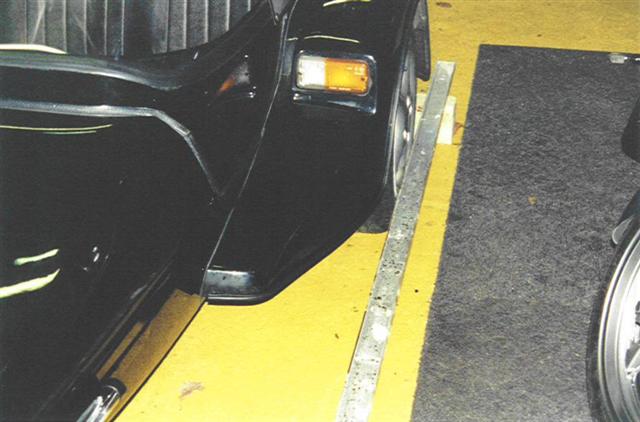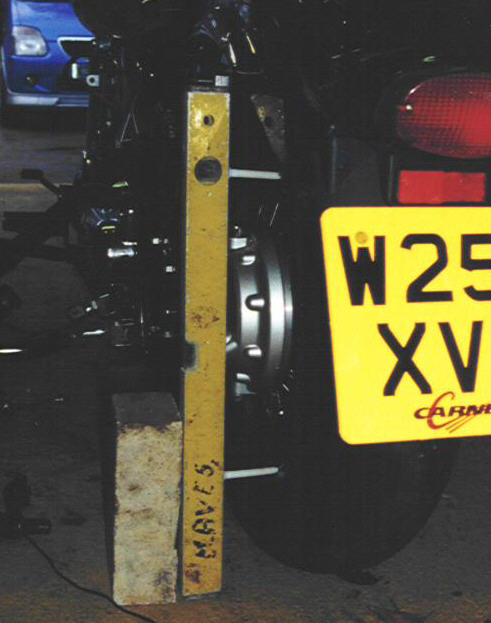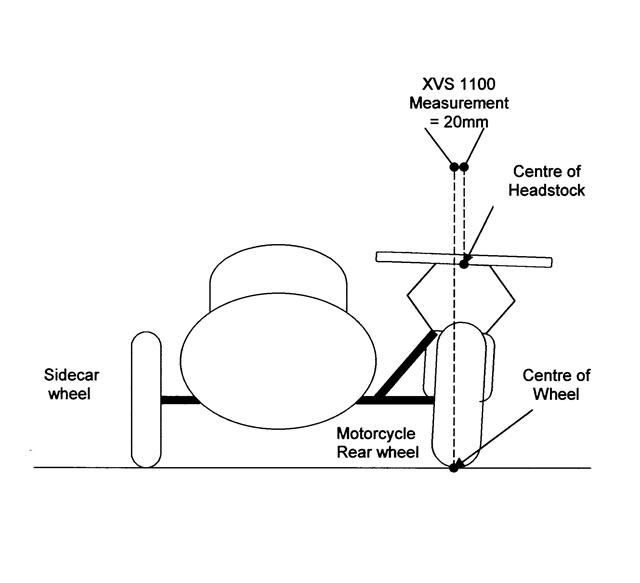Tri-Anglia Wheels Sidecar Club (Sidecarland) assume no responsibility or liability for any injury, loss or damage incurred as a result of any use or reliance upon the information and material contained within or used from its website.
Sidecar Fitting The Basic Measurements
Sidecar wheel lead;-The distance straight forward from the rear axle of the bike to the sidecar wheel spindle is known as the lead. The value can be anything from zero on some vintage outfits to as much as 50 cm. As lead is increased the weight distribution improves until a point is reached where the steering becomes too heavy and tyre wear becomes excessive. A good compromise will usually be found between 15 and 35 cm. It is not critical and may in any case be dictated by where the fittings can be positioned. Here you can see I have used a straight edge, which was placed, on motorcycle centre of axle at 90 degrees and measured from straight edge to the sidecar wheel axle or spindle the value on this set up is 36cm
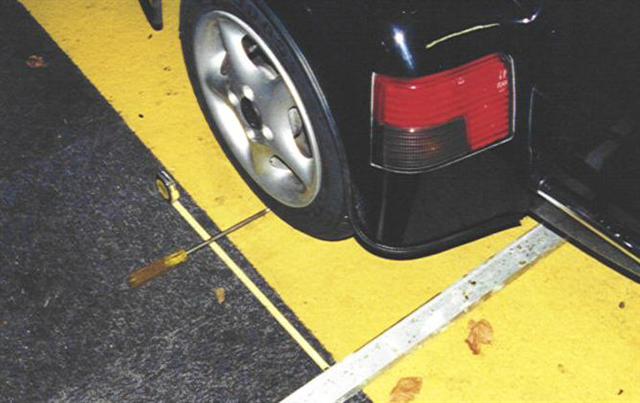
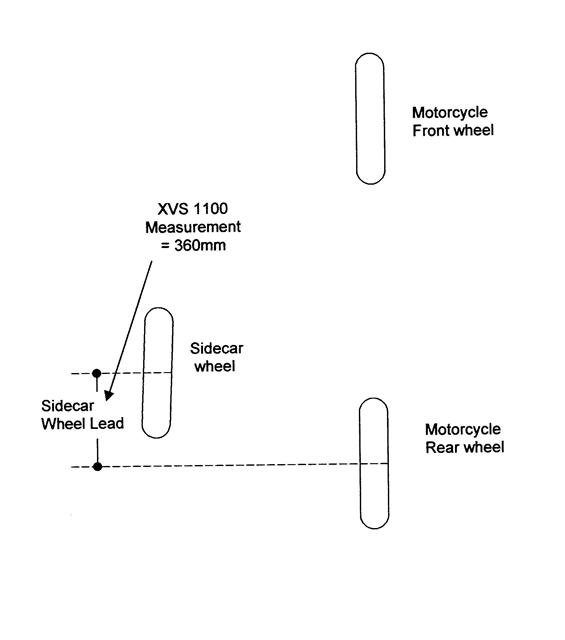 Sidecar Wheel Toe-in;-Toe-in is defined as the amount by which the track width at the front wheel is narrower than at the rear. It is measured using a pair of straight edges, one along the motorcycle wheels and one along the sidecar wheel as shown in picture extending forward to the front wheel. If the front and rear wheels differ in width this should be allowed for. The motorcycle in this case was an XVS 1100 which has a 170 section rear and a 110 section front tyre, so as there is quite a difference in width I used a straight edge along the sidecar wheel and measured to the centre line of both front and rear wheels. Too much toe-in will scrub the tyres on turns toward the sidecar and let the outfit drift towards the middle of the road under neutral steering. Too little toe-in and the outfit will favour the gutter. In practice it is usually found that a well set-up outfit will move slightly towards the curb under acceleration and slightly away on braking. A typical value for sidecar wheel toe-in would be between 10 and 40 mm, rarely, would you exceed 40 mm.
Sidecar Wheel Toe-in;-Toe-in is defined as the amount by which the track width at the front wheel is narrower than at the rear. It is measured using a pair of straight edges, one along the motorcycle wheels and one along the sidecar wheel as shown in picture extending forward to the front wheel. If the front and rear wheels differ in width this should be allowed for. The motorcycle in this case was an XVS 1100 which has a 170 section rear and a 110 section front tyre, so as there is quite a difference in width I used a straight edge along the sidecar wheel and measured to the centre line of both front and rear wheels. Too much toe-in will scrub the tyres on turns toward the sidecar and let the outfit drift towards the middle of the road under neutral steering. Too little toe-in and the outfit will favour the gutter. In practice it is usually found that a well set-up outfit will move slightly towards the curb under acceleration and slightly away on braking. A typical value for sidecar wheel toe-in would be between 10 and 40 mm, rarely, would you exceed 40 mm.
Motorcycle lean-out;-When fully laden it is important that the bike should not lean towards the sidecar; if it does the steering may be heavy particularly when turning away from the sidecar. The amount of lean-out is measured at the steering head of the un-laden motorcycle and is usually less than 3 cm. Outfits with car tyres, particularly wide, low profile ones, should be set up with zero lean-out. This measurement is difficult to correctly set at the start (this is what I found) only when the arms are fitted and the arms support the motorcycle can you get a somewhat accurate measurement. You can use a string line with small weight, hung from the steering head or as in the picture a spirit level on the rear wheel. Remember you must be on a level surface. If the motorcycle is fitted with wide low profile car tyres it would possibly be somewhat easier. My lean-out here for XVS 1100 and RX4 was 20mm approximately. As you can see from the drawing it is some-what difficult but with care an accurate measurement can be obtained

